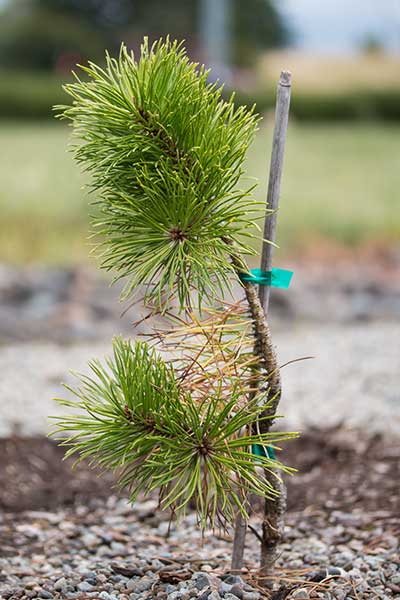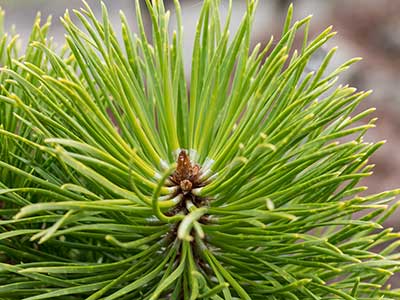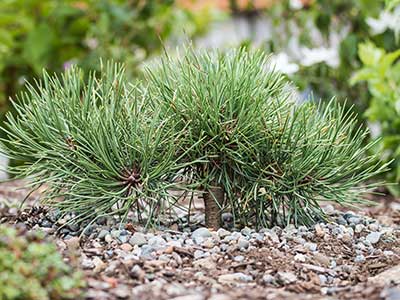Ponderosa Pine 'Mary Anne Heacock'
- Scientific Name: Pinus ponderosa 'Mary Anne Heacock'
- Garden: Natives Garden
- Plant Type: Tree
- Evergreen/Deciduous: Evergreen
- Sun/Shade Exposure: Full Sun
- Moisture Requirements: Moist/Well-Drained
Plant Information
Ponderosa Pine is a massive tree highly recognizable with its five-inch long needles and bristly brown cones, sloughing puzzle bark, either standing alone or mixed with other conifers, mostly east of the Cascades; this is the Yellow pine that can grow up to two hundred feet with a maximum girth of fifteen to twenty feet! But there is also a strain of Pinus ponderosa that is native to the Willamette Valley, a little smaller in stature and more adaptable to our wetter weather. ‘Mary Ann Heacock’ is a dwarf pine with needles half the length of species; growth rate: 2-4”/year
Native Range: From low elevation to highest, coast to far east of the Cascades, depending on species
Characteristics: Evergreen, needle-like leaves bundled in twos, threes or fives. Slow to fast growing, in the wild some species can reach up to 200’ in height. All produce cones.
Culture: Prefers full sun and good drainage. Many are tolerant of poor soils. Some make excellent container/bonsai choices.
Pests/Diseases: Pines are susceptible to a variety of fungus and insect pests, though most are not severe problems in home gardens. The exceptions are white pine blister-rusts (five-needled species) and pine-shoot moth (especially two-needled species).
Pines are also sometimes compromised in general health and vigor due to urban pollution and situations of poor drainage.
Data Source
https://www.portlandnursery.comPlant Photos









